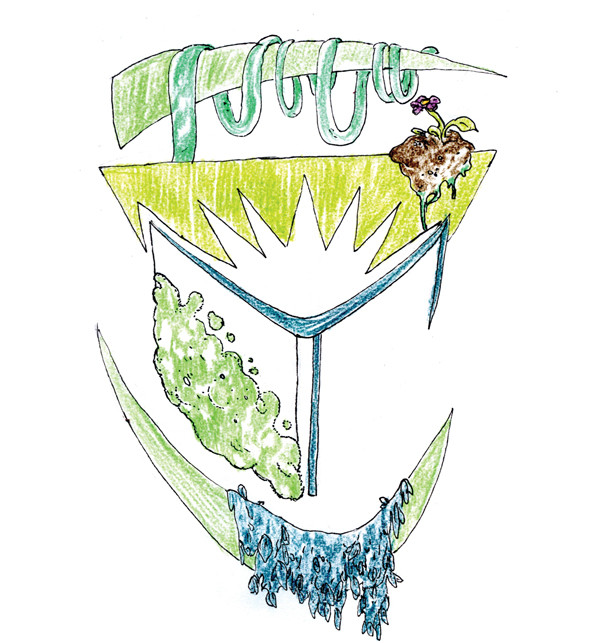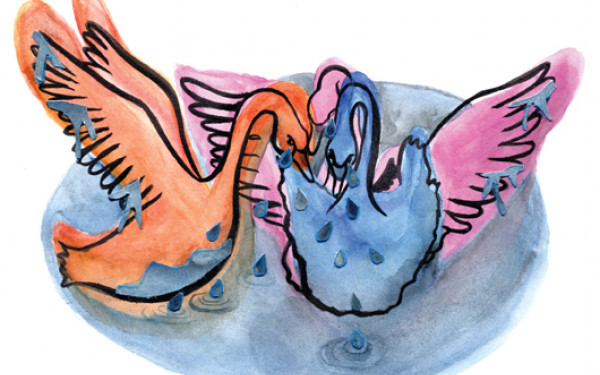Towards a Greener Concordia
Reports Assess Concordia’s Sustainability
At an institution as big as Concordia, in order to be truly “sustainable,” long-term efforts must come from all corners of the university.
Concordia has conducted three sustainability audits since 2003, the most recent report having been released in 2009. The next Concordia Campus Sustainability Assessment report is in the works, looking at everything from governance to construction to course content.
For transportation, a draft of the forthcoming report notes that about 90 per cent of students and 80 per cent of employees are using “sustainable commuting” practices, including public transport, the shuttle bus or active transport such as cycling or walking.
At Loyola, security officials use two electric cars, which are permitted to drive on the streets surrounding Loyola, to travel on campus. Loyola has two electric car charging stations for public use on the campus.
The report draft, dated Jan. 30, 2014, recommends that the Concordia shuttle buses use B20 biodiesel fuel, which is 20 per cent biodiesel, compared to the two per cent biodiesel fuel mix the university currently uses. According to a 2002 Environmental Protection Agency report cited in the draft, switching to B20 fuel would reduce CO2 emissions by 12 per cent, compared to just 1.5 per cent for the B2 fuel currently in Concordia shuttle buses.
However, the report notes the source of biofuel is critical to its recommendation.
“Biodiesel produced from conventional food crops that could have otherwise been used as food is considered an unsustainable source,” reads the draft, noting the source of biofuel should not create competition with “animal or human food supply.”
Biofuel driving up the price of food is a source of controversy for the clean energy source, in that it crowds out developing countries from growing their own crops.
Another recommendation is to add an emissions surcharge for certain vehicle parking fees to encourage more use of hybrid and electric cars, and provide additional funds for shuttle and bicycle projects. Signage for Montreal’s no-idling bylaw is also recommended to be placed “throughout [Concordia]’s community.”
Concordia’s newest building has qualified for the Leadership in Energy and Environmental Design silver rating. The Centre for Structural and Functional Genomics is the third Concordia building to receive LEED certification—the current standard for sustainable building.
The ratings system was developed by the U.S. Green Building Council, and since 2003 the Canada Green Building Council has been evaluating buildings using this ratings system. The Molson Building also has silver certification, and the PERFORM Centre has gold certification—the second-highest ranking after platinum.
While these new buildings are getting the LEED seal of approval, the report draft recommends that clearly defined sustainable practices should be worked into Concordia’s Environmental Policy.
The policy currently states that “green building principles” must be used for construction and renovation projects, including “optimal energy efficiency, life-cycle costs, high indoor environmental quality, and reduced water consumption.”
The university also has two “green roofs” to use as garden space, however the report draft notes the roof on the MB Building is not currently being maintained.
The renovations of the outside of the GM Building will reduce its natural gas consumption—which Concordia uses to heat its buildings—by 65 per cent, according to a 2011 report by Pageau Morel et Associés Inc. The D.B. Clarke Theatre also now uses LED light bulbs, which use less energy than the old incandescent ones.


_600_832_s.png)

2_600_375_90_s_c1.jpg)
-01(WEB)_600_375_s_c1.png)
_600_375_90_s_c1.jpg)
